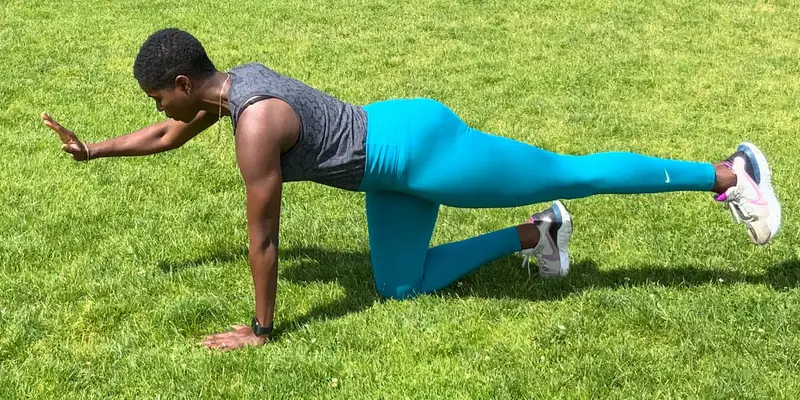Building a Balanced Path to Health and Fitness

Introduction
Maintaining health and fitness is more than a resolution—it’s a lifelong journey that enriches every aspect of our existence. While trends come and go, the core principles of well‑being remain constant: balanced nutrition, consistent movement, adequate rest, and a resilient mindset. This article explores these pillars in depth, offering actionable insights to help you craft a sustainable routine that supports your body, mind, and spirit.
1. Fueling Your Body: Nutrition
From the moment we wake until we lay our heads down at night, our bodies are in constant flux: recovering from yesterday’s exertions, adapting to today’s challenges, and preparing for tomorrow’s opportunities. A diet rich in whole foods—vegetables, fruits, lean proteins, whole grains, nuts, and seeds—provides the vitamins, minerals and macronutrients your cells need to thrive. Aim to plate half your meals with colorful vegetables, one quarter with quality protein (fish, poultry, legumes, tofu) and one quarter with complex carbohydrates (oats, brown rice, sweet potatoes). Small tweaks, like swapping sugary snacks for a handful of almonds and berries, can dramatically stabilize your energy and mood.

2. The Power of Hydration
Hydration, often overlooked, is equally vital. Water regulates body temperature, transports nutrients and flushes out waste. You don’t have to obsessively track every ounce—listening to your thirst and observing the color of your urine (pale straw is ideal) are simple cues that keep you adequately watered. For workouts longer than an hour, consider an electrolyte‑rich beverage to replenish sodium, potassium, and magnesium lost through sweat.
3. Movement Is Medicine
Regular physical activity strengthens your heart, builds muscle, improves flexibility, and sharpens your mind. You don’t need to train like an Olympian to reap major rewards. The World Health Organization recommends at least 150 minutes of moderate‑intensity aerobic exercise per week (brisk walking, cycling, dancing), plus two sessions of strength training targeting all major muscle groups. If your schedule won’t allow structured workouts, break your activity into manageable chunks—three 10‑minute walks spread throughout the day count just as much as one 30‑minute session.
4. Strength Training Essentials
Strength training deserves special attention: lifting weights or performing body‑weight exercises (push‑ups, squats, lunges) not only sculpts your physique but also boosts your resting metabolic rate, enhancing your ability to burn calories even at rest. Aim for controlled movements, proper form, and progressive overload (gradually increasing weight or reps) to continue challenging your muscles.
5. Flexibility and Mobility
Flexibility and mobility work—through yoga, dynamic stretching, or foam rolling—reduce injury risk and improve posture, keeping you feeling limber as you age. Try dedicating 5–10 minutes after each workout to gentle stretches or a brief yoga flow. This not only aids recovery but also enhances circulation and relaxation.
6. The Importance of Rest and Recovery
Rest and recovery are the unsung heroes of progress. Without adequate sleep, your body struggles to repair muscle tissue, consolidate memories, and regulate hormones such as cortisol and insulin. Aim for 7–9 hours of high‑quality sleep each night. Optimize your rest by establishing a wind‑down routine: dim the lights an hour before bed, limit screen time (blue light disrupts melatonin production), and consider calming rituals like reading, meditation, or gentle stretching.
Beyond nightly sleep, don’t underestimate the power of active recovery: light movement on rest days—such as a leisurely bike ride, a restorative yoga class, or a stroll in nature—promotes blood flow and eases muscle soreness. Occasional massages, contrast showers (alternating hot and cold water), or even a brief nap can accelerate your body’s readiness for the next training session.
7. Cultivating a Resilient Mindset
A resilient mindset ties all these elements together. Health isn’t a finish line; it’s a series of choices made day after day. Cultivating consistency over perfection prevents burnout and disillusionment. Celebrate small victories—perhaps you added an extra vegetable serving, hit a new squat personal best, or simply managed five uninterrupted minutes of meditation. These milestones reinforce your progress and motivate you to keep going.
Techniques like goal‑setting can help: set SMART goals—Specific, Measurable, Achievable, Relevant, Time‑bound—and track them in a journal or a fitness app. Social support is also invaluable; find a workout buddy, join an online community, or share your journey on social media to stay accountable. When setbacks occur—an illness, a busy workday, a holiday feast—reframe them as temporary pauses rather than failures. Reflect on what you’ve learned, adjust your strategy, and return with renewed purpose.
8. Creating Your Personalized Routine
Nutrition, movement, rest, and mindset create a synergy greater than the sum of their parts. Imagine your health routine as a four‑legged stool: without one leg, the whole structure wobbles. Strive to balance these pillars by evaluating one area at a time. Perhaps this week you’ll focus on adding an extra serving of greens to each meal; next week, you might prioritize bedtime consistency or introduce two strength sessions.
Individual needs vary—some may thrive with high‑intensity interval training; others may prefer daily walks and gentle yoga. Food allergies, chronic conditions, and personal preferences call for customized approaches. Consider consulting a registered dietitian, personal trainer, or healthcare provider for tailored recommendations.
Conclusion
Health and fitness aren’t about chasing an idealized body or punishing routines—they’re about honoring and empowering your unique self. By nourishing your body with wholesome food, challenging it with purposeful movement, resting it effectively, and nurturing a growth‑oriented mindset, you set the stage for a vibrant life. Embrace the process, adapt with flexibility, and celebrate each step forward. Your healthiest, fittest self is not a distant destination but a daily practice—one meal, one workout, one restful night, and one positive thought at a time.
